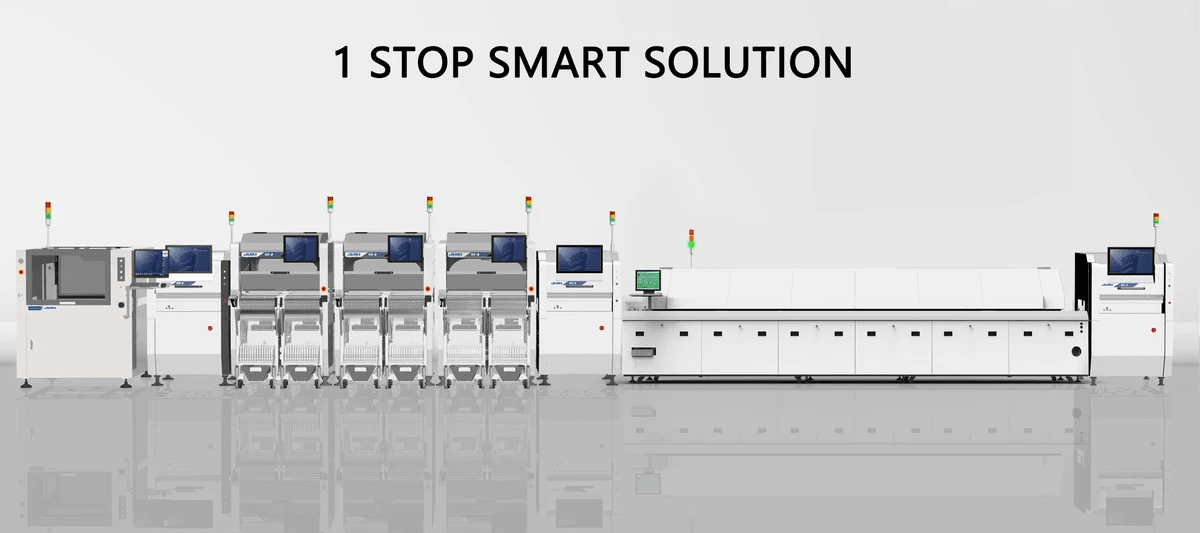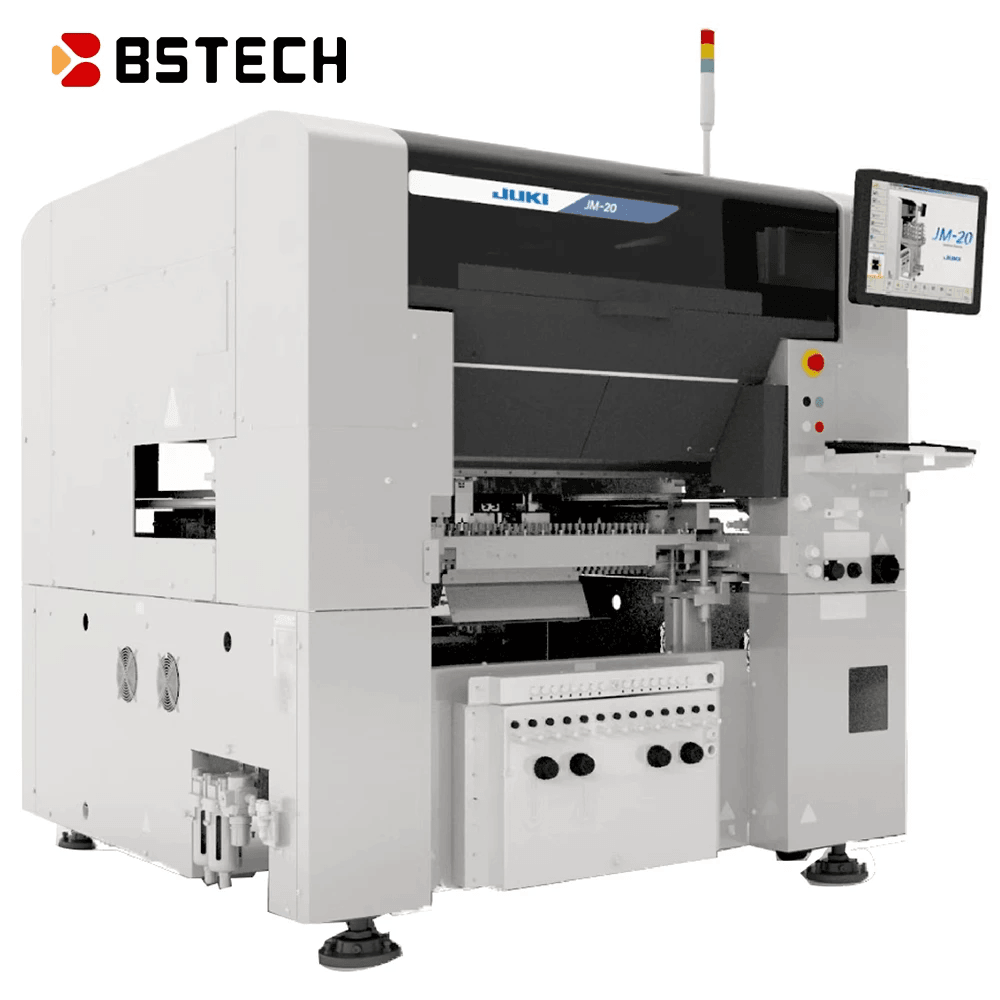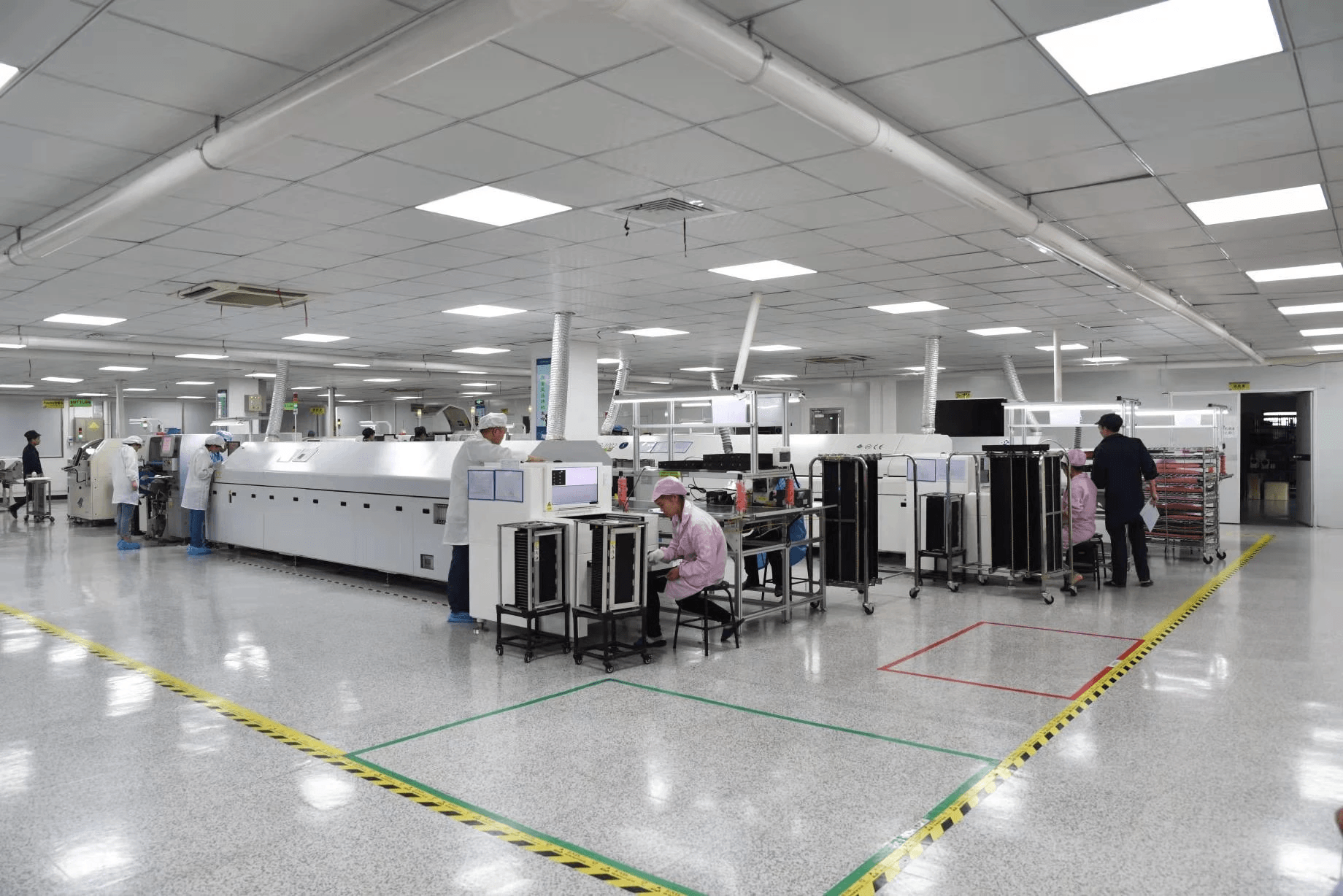Introduction

The world of electronics is advancing at breakneck speed, and at the heart of this evolution lies Surface Mount Technology (SMT) assembly innovations. These innovations are not just reshaping how we approach printed circuit assembly but are also enhancing the efficiency of PCB assembly and manufacturing processes. With the right smt assembly equipment, companies can significantly improve their production capabilities, ensuring that they remain competitive in a rapidly changing market.
Exploring SMT Assembly Innovations
Innovations in SMT assembly are revolutionizing how we design and produce circuit boards. From automated pick-and-place machines to advanced solder paste inspection systems, these technologies streamline the printed board assembly process and reduce human error. As manufacturers adopt these innovative solutions, they unlock new levels of precision and efficiency in their PCB assembly operations.
The Role of Equipment in PCB Efficiency
The importance of high-quality smt assembly equipment cannot be overstated when it comes to achieving optimal PCB efficiency. Each piece of equipment plays a crucial role in the printed circuit assy process, impacting everything from component placement accuracy to soldering quality. By investing in state-of-the-art machinery, manufacturers can ensure that their pcb assembly board meets stringent industry standards while maximizing productivity.
Benefits of Advanced SMT Solutions
Advanced SMT solutions bring a myriad of benefits to the table, particularly in enhancing overall production quality and reducing costs associated with errors and rework. By integrating sophisticated technologies such as real-time monitoring systems into their processes, companies can achieve unparalleled levels of quality assurance during solder paste inspection and other critical phases of production. Ultimately, leveraging these advanced solutions not only streamlines operations but also positions manufacturers for long-term success in an increasingly competitive landscape.
Understanding SMT Assembly Equipment

In the world of printed circuit assembly (PCA), the right SMT assembly equipment can make all the difference. With advancements in technology, manufacturers are continually upgrading their machinery to enhance efficiency and quality in PCB assembly and manufacturing. Understanding the different types of equipment available is crucial for any company looking to optimize its printed board assembly processes.
Types of Essential SMT Equipment
When it comes to SMT assembly equipment, several key players take center stage. Pick-and-place machines are essential for accurately placing components on a circuit board, ensuring precision that manual methods simply can't match. Additionally, solder paste printers are vital for applying solder paste uniformly, while reflow ovens facilitate the melting of solder to create strong electrical connections during the printed circuit assy process.
Another important piece of equipment is the inspection system, which includes both automated optical inspection (AOI) and solder paste inspection systems. These tools help detect defects early in the PCB assembly process, reducing waste and improving overall product reliability. Each type of equipment plays a unique role in ensuring that your PCB assembly board meets high-quality standards.
Key Features of Modern SMT Machines
Modern SMT machines come packed with features designed to boost productivity and accuracy in printed circuit assembly tasks. High-speed operation is one standout feature; these machines can place thousands of components per hour, significantly cutting down production time while maintaining quality standards. Additionally, advanced software integration allows for real-time monitoring and adjustments during manufacturing processes.
Flexibility is another critical feature; today's machines can handle a wide range of component sizes and types without requiring extensive reconfiguration. This adaptability is essential as product designs evolve rapidly in response to market demands. Furthermore, enhanced user interfaces simplify machine operation and increase accessibility for operators at all skill levels.
How Equipment Impacts Assembly Quality
The quality of your PCB assembly largely hinges on the effectiveness of your SMT assembly equipment. Poorly calibrated or outdated machines can lead to misaligned components or inadequate solder joints, resulting in costly defects that require rework or scrapping entire batches of boards. Conversely, investing in modern equipment with advanced features ensures higher precision during placement and improved reliability through better solder paste inspection practices.
Moreover, regular maintenance plays a significant role in sustaining high-quality output from your SMT machinery; even top-tier equipment requires routine checks to function optimally over time. The impact on overall production efficiency cannot be overstated—efficient machinery minimizes downtime and enhances throughput while delivering consistent results across multiple runs of printed circuit assemblies. Ultimately, choosing the right smt assembly equipment directly influences both product quality and operational profitability.
The Printed Circuit Assembly Process

The printed circuit assembly (PCA) process is a meticulous journey that transforms raw materials into functional electronic devices. This intricate process involves various stages, each crucial for ensuring the performance and reliability of the final product. Understanding these steps helps manufacturers optimize their workflow and enhance the efficiency of their smt assembly equipment.
Steps in Printed Circuit Assembly
The printed circuit assembly begins with the design phase, where engineers create a schematic layout that dictates how components will be placed on the circuit board. Once the design is finalized, it’s time to prepare the PCB assembly board by applying solder paste through a stencil onto designated pads. Following this, components are accurately placed onto the soldered areas using advanced smt assembly equipment, after which reflow soldering solidifies connections.
After soldering, several critical steps follow: inspecting for defects, cleaning any residues from manufacturing, and conducting functional tests to ensure everything works as intended. This sequence not only guarantees that each printed board assembly meets quality standards but also addresses potential issues before they escalate into costly problems down the line. Regularly revisiting these steps can significantly improve overall production efficiency and product reliability.
Importance of Solder Paste Inspection
Solder paste inspection is a pivotal aspect of ensuring high-quality PCB assembly and manufacturing processes. By checking the application of solder paste before component placement, manufacturers can identify potential defects such as insufficient paste volume or misalignment early on. This proactive approach minimizes errors during subsequent stages and ultimately enhances the reliability of electronic devices.
Effective solder paste inspection utilizes advanced technologies such as automated optical inspection (AOI), which ensures that every area on the circuit board receives adequate coverage for optimal soldering results. Neglecting this step can lead to cold joints or bridging between components—issues that can compromise performance in critical applications. Therefore, investing in robust inspection systems not only streamlines production but also safeguards against future failures in printed circuit assy.
Troubleshooting Common Assembly Issues
Even with state-of-the-art smt assembly equipment, challenges can arise during printed circuit assembly that may hinder production efficiency or product quality. Common issues include component misalignment, insufficient solder joints, and even contamination from dust or residues left over from previous processes on the PCB assembly board. Identifying these problems early allows teams to implement corrective measures swiftly.
Troubleshooting begins with thorough inspections at various stages of production; utilizing techniques like X-ray imaging or thermal profiling helps pinpoint where things went awry during soldering or component placement processes. Additionally, fostering an environment where operators are encouraged to report anomalies leads to quicker resolution times and prevents minor issues from snowballing into major setbacks later on in manufacturing cycles. With proper training and resources dedicated to troubleshooting common pitfalls in printed circuit assy processes, companies can maintain high standards while producing reliable products.
Advancements in Circuit Board Technology

In the ever-evolving landscape of electronics, advancements in circuit board technology are paramount for enhancing performance and efficiency. The demand for more compact, powerful, and reliable printed circuit assembly (PCA) solutions is driving innovation across the industry. As manufacturers strive to meet customer expectations, they are increasingly adopting cutting-edge technologies that redefine what’s possible in PCB assembly and manufacturing.
Emerging Trends in PCB Design
The world of PCB design is witnessing several exciting trends that are reshaping how we approach printed board assembly. One notable trend is the shift towards multi-layer PCBs, which allow for greater functionality without increasing size—ideal for compact devices like smartphones and wearables. Additionally, the integration of flexible circuits is gaining traction, enabling manufacturers to create innovative designs that can bend and twist without compromising performance.
Another significant trend is the emphasis on modular designs, which facilitate easier upgrades and repairs while reducing waste—perfect for sustainable practices in PCB assembly and manufacturing. Designers are also focusing on enhanced thermal management features to ensure reliability under high-performance conditions, addressing common issues related to heat dissipation during operation. Overall, these emerging trends not only enhance functionality but also improve the longevity of circuit boards.
The Role of AI in Circuit Board Production
Artificial intelligence (AI) is making waves in circuit board production by streamlining processes and enhancing quality control measures throughout printed circuit assembly. By utilizing machine learning algorithms, manufacturers can predict potential failures before they occur—minimizing downtime and ensuring a smoother production flow. AI-driven systems can optimize solder paste inspection processes as well, identifying defects with remarkable accuracy that surpasses traditional methods.
Moreover, AI assists engineers in designing more efficient layouts by analyzing vast datasets to determine optimal configurations for electronic components on a PCB assembly board. This capability reduces material waste while improving overall efficiency during manufacturing stages. As AI continues to evolve within this space, it promises to revolutionize how we approach PCB design and production.
Materials Driving PCB Innovations
The materials used in printed circuit assy have undergone significant transformations recently—driving innovations that enhance performance while addressing challenges like weight reduction and thermal management. High-frequency laminates are gaining popularity as they allow for faster signal transmission while minimizing losses—crucial for modern applications such as 5G technology or advanced computing systems. Furthermore, advancements in dielectric materials contribute significantly to improving insulation properties within PCBs.
Additionally, manufacturers are exploring eco-friendly materials as sustainability becomes a priority across industries; biodegradable substrates present an exciting opportunity for reducing environmental impact without sacrificing quality or performance during PCB assembly and manufacturing processes. These innovative materials not only support higher functionality but also align with the growing demand for greener solutions within electronics production—a win-win scenario!
Quality Control in PCB Assembly Manufacturing

In the world of printed circuit assembly, quality control is not just a checkbox; it's the backbone of reliable and efficient production. With the rapid advancements in SMT assembly equipment, ensuring that every component is correctly placed and soldered has become increasingly complex but equally vital. A robust quality assurance process can significantly reduce defects and enhance the overall performance of circuit boards.
Techniques for Effective Quality Assurance
Effective quality assurance in PCB assembly manufacturing begins with a comprehensive understanding of SMT assembly equipment capabilities. Techniques such as Automated Optical Inspection (AOI) and X-ray inspection are critical for detecting defects that might go unnoticed during manual checks. Additionally, implementing real-time monitoring systems can provide immediate feedback, allowing for quick adjustments to the printed board assembly process when necessary.
Another crucial technique is solder paste inspection, which verifies that the right amount of paste is applied before components are placed on the PCB assembly board. By employing these advanced methods, manufacturers can ensure high-quality output while minimizing waste and rework costs associated with faulty assemblies. The integration of these techniques into daily operations not only boosts product reliability but also enhances customer satisfaction.
Benefits of Regular Inspections
Regular inspections play an essential role in maintaining high standards within PCB assembly and manufacturing processes. By conducting frequent assessments, manufacturers can identify potential issues early on—before they escalate into costly problems or production delays. This proactive approach helps ensure that each printed circuit assy meets stringent quality requirements throughout its lifecycle.
Moreover, regular inspections foster a culture of continuous improvement within organizations by encouraging teams to identify areas where efficiency can be enhanced or errors reduced. Implementing a routine inspection schedule also builds trust with clients who expect top-notch quality from their suppliers; after all, nobody wants to deal with a faulty circuit board! Ultimately, embracing regular inspections leads to better product performance and longevity in an increasingly competitive market.
Case Studies of Quality Control Failures
Examining past failures in quality control provides valuable lessons for PCB assembly manufacturing professionals looking to improve their processes. One notable case involved a large electronics manufacturer whose reliance on outdated SMT assembly equipment led to widespread defects in their products due to improper solder paste application techniques—resulting in costly recalls and reputational damage. This incident highlighted how critical it is to stay updated with modern technologies and practices within printed circuit assembly.
Another example comes from a company that neglected regular inspections during their production runs; this oversight resulted in multiple batches of defective circuit boards being shipped out without detection. The fallout was significant: not only did they face financial losses from returns and repairs, but they also lost valuable customers who turned elsewhere for reliable products. These case studies underscore the importance of investing time and resources into effective quality assurance techniques—because when it comes down to it, prevention is always better than cure!
The Future of PCBA and Manufacturing

The landscape of printed circuit board assembly (PCBA) is evolving rapidly, driven by technological advancements and market demands. As industries increasingly rely on electronic devices, the need for efficient, high-quality PCB assembly and manufacturing processes becomes paramount. This section delves into the trends shaping the future of PCBA, the push towards sustainability in manufacturing, and how companies like Bensun Technology are at the forefront of these changes.
Trends Shaping the Future of PCBA
One prominent trend in PCBA is the integration of automation in SMT assembly equipment. Automated systems not only enhance efficiency but also reduce human error during printed circuit assembly processes. Furthermore, as technology advances, we see an increase in miniaturization—circuit boards are becoming smaller while maintaining functionality, which demands innovative approaches to design and assembly.
Another significant trend is the rise of smart manufacturing practices that leverage data analytics and AI to optimize production lines. These technologies facilitate real-time monitoring and predictive maintenance for solder paste inspection processes, ensuring that any potential issues are addressed before they escalate into costly problems. As manufacturers adopt these advanced methodologies, they can expect improved quality control throughout their PCB assembly operations.
Lastly, there’s a growing emphasis on flexibility within manufacturing systems to accommodate rapid prototyping and shorter production runs. This adaptability allows companies to respond quickly to changing market demands while still maintaining high standards in printed board assembly quality. Embracing these trends will be crucial for businesses aiming to stay competitive in this fast-paced environment.
Sustainability in PCB Manufacturing
Sustainability has become a critical focal point within PCB assembly and manufacturing sectors as industries strive to minimize their environmental impact. The shift towards eco-friendly materials is gaining momentum; manufacturers are exploring biodegradable substrates and lead-free solder alternatives that align with global environmental standards. By adopting sustainable practices in printed circuit assy processes, companies can significantly reduce waste generated during production.
Moreover, energy-efficient SMT assembly equipment plays a vital role in reducing carbon footprints across manufacturing facilities. Implementing energy-saving technologies not only conserves resources but also lowers operational costs—a win-win situation for businesses committed to sustainability goals. Additionally, recycling initiatives for electronic waste ensure that discarded circuit boards are processed responsibly rather than contributing to landfill overflow.
Consumer demand for environmentally responsible products continues to rise; therefore, manufacturers must prioritize sustainability if they wish to remain relevant in today’s marketplace. By integrating eco-conscious strategies into their PCB assembly board operations, companies can enhance their reputation while contributing positively to global efforts aimed at preserving our planet.
How Bensun Technology is Leading the Way
Bensun Technology stands out as a pioneer in advancing SMT assembly equipment tailored for modern challenges faced by PCB manufacturers today. Their commitment to innovation has resulted in cutting-edge solutions that streamline printed circuit assembly processes while ensuring top-notch quality control through enhanced solder paste inspection techniques. With a focus on adaptability and efficiency, Bensun's machinery positions clients ahead of competitors navigating an ever-evolving landscape.
Furthermore, Bensun Technology embraces sustainability by developing energy-efficient machines designed with eco-friendly practices at their core—demonstrating how profitability can coexist with environmental responsibility within PCB assembly manufacturing environments. Their proactive approach ensures clients benefit from reduced operational costs without compromising on performance or ethical considerations regarding waste management.
In summary, Bensun Technology exemplifies leadership within the industry by consistently pushing boundaries through technological advancements while prioritizing sustainable practices across all facets of their operations—setting a benchmark others aspire toward as they navigate future challenges facing printed circuit board assemblies worldwide.
Conclusion
In the fast-paced world of electronics manufacturing, the right equipment can make or break your printed circuit assembly (PCA) process. Choosing suitable SMT assembly equipment is not just a matter of preference; it’s an essential step toward achieving high-quality results and maintaining competitive advantage. As technology continues to evolve, investing in advanced PCB assembly and manufacturing tools becomes increasingly crucial for ensuring efficiency and precision.
The Importance of Choosing the Right Equipment
Selecting the appropriate SMT assembly equipment is foundational to any successful printed board assembly operation. High-quality machines equipped with features like automated solder paste inspection ensure that every component is placed accurately, reducing errors in the printed circuit assembly process. Additionally, using state-of-the-art equipment minimizes downtime and maximizes productivity, ultimately leading to higher profit margins for manufacturers.
Maximizing Efficiency with Advanced Solutions
To maximize efficiency in PCB assembly board production, manufacturers must leverage advanced solutions that streamline operations and reduce waste. Technologies such as AI-driven analytics can provide insights into production bottlenecks and areas for improvement, allowing businesses to refine their processes continuously. By integrating innovative SMT assembly equipment into their workflows, companies can enhance speed without compromising quality—an essential balance in today’s competitive landscape.
Future-Proofing Your PCB Assembly Process
Future-proofing your printed circuit assy operations requires a proactive approach to technology adoption and workforce training. As trends like miniaturization and increased functionality drive changes in circuit board design, staying ahead means regularly updating your SMT assembly equipment to meet new demands. Embracing sustainability practices in PCB assembly and manufacturing not only prepares you for future regulations but also appeals to environmentally conscious consumers—making it a win-win situation.
